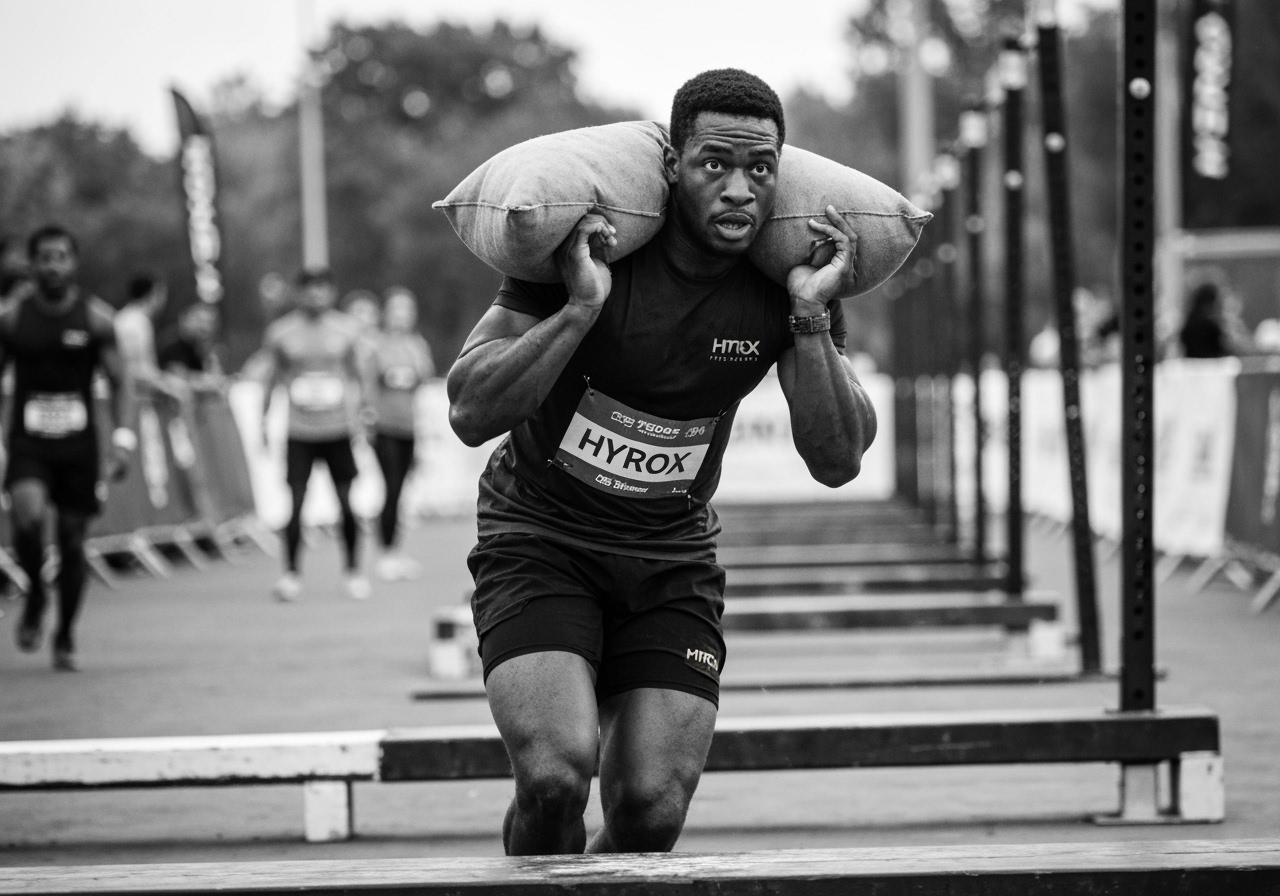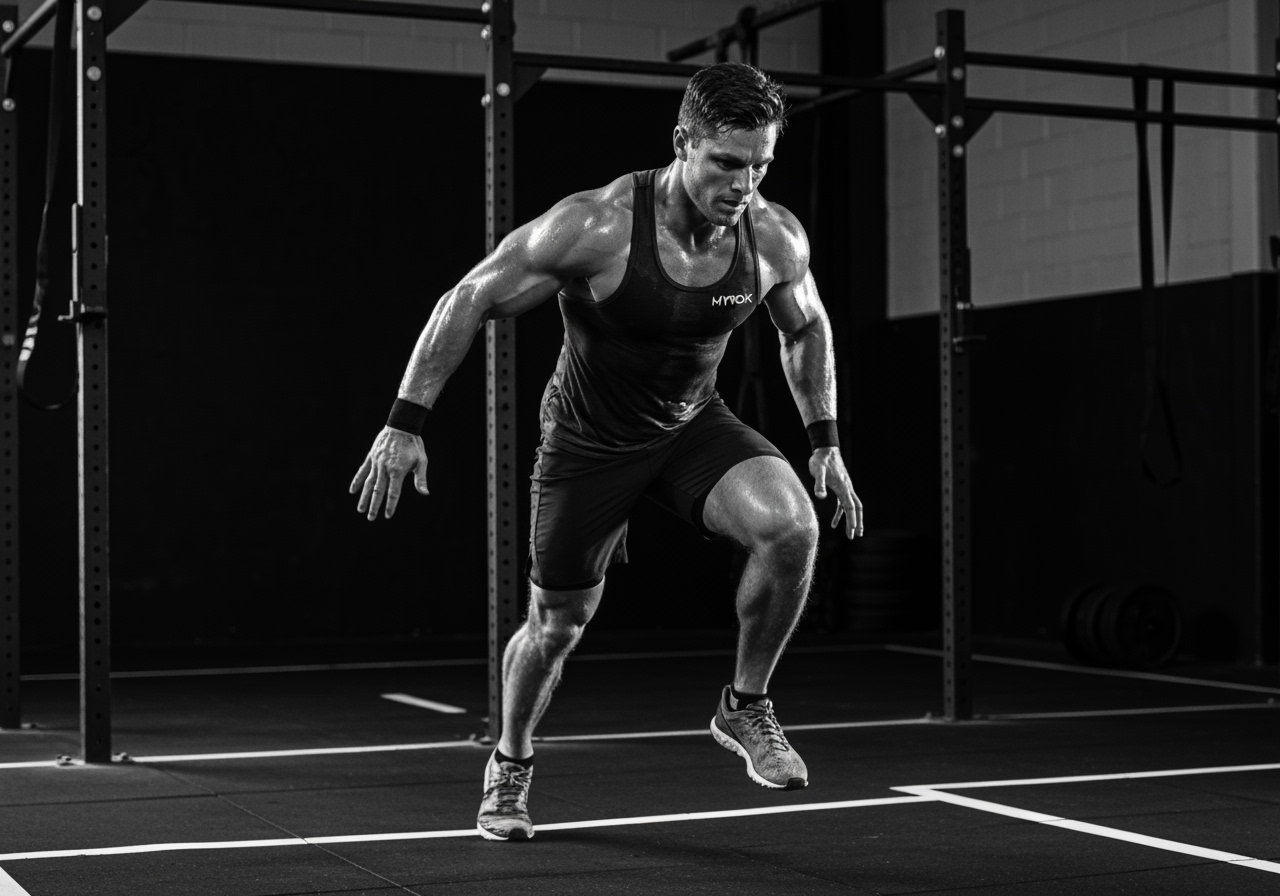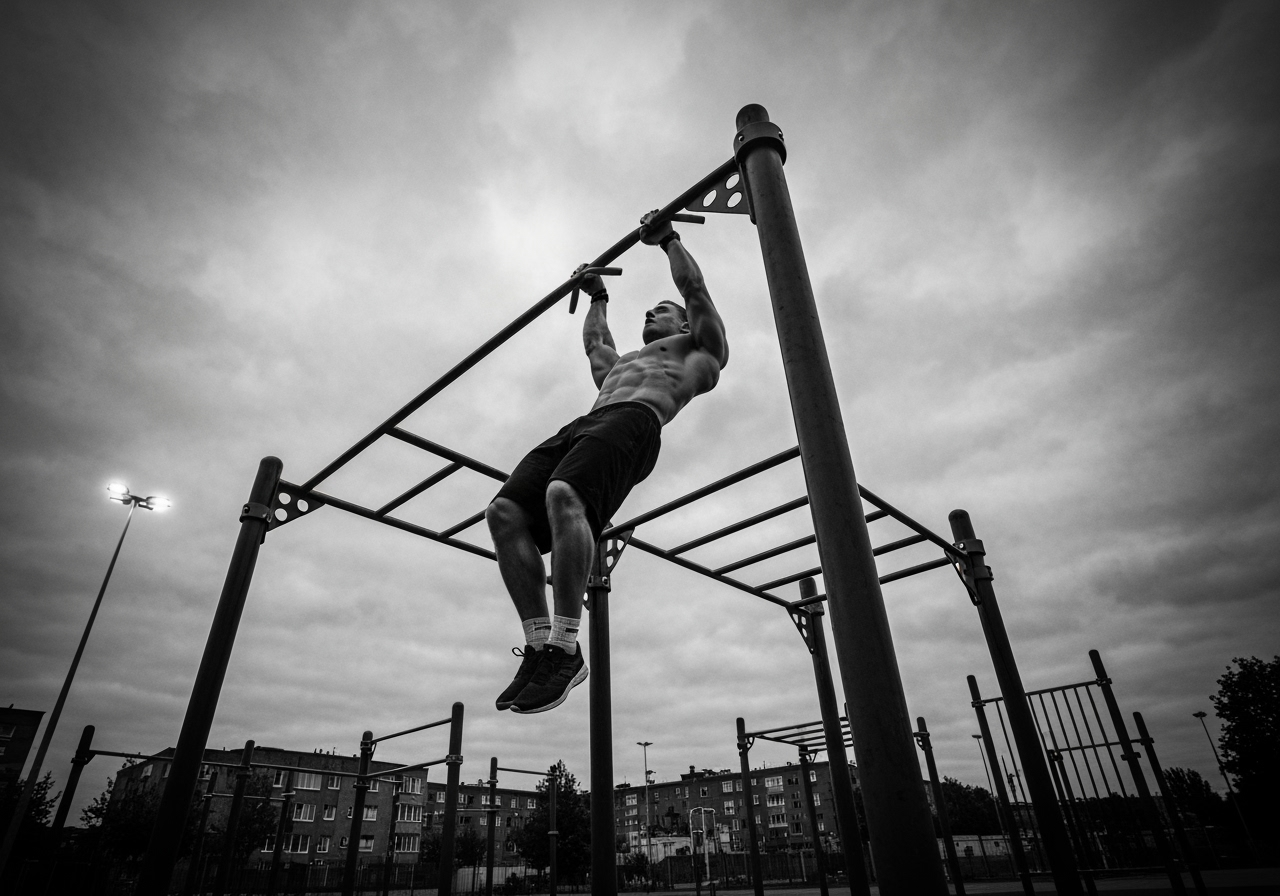 wall balls and burpees" style="width: 100%; max-width: 800px; height: auto; border-radius: 12px; box-shadow: 0 20px 40px rgba(0,0,0,0.3);" />
wall balls and burpees" style="width: 100%; max-width: 800px; height: auto; border-radius: 12px; box-shadow: 0 20px 40px rgba(0,0,0,0.3);" />
In HYROX, raw strength and raw endurance alone aren't enough. The real edge comes from strength-endurance—the ability to maintain power and speed through high-rep, high-fatigue stations. Wall balls and burpees are notorious for exposing weaknesses here.
Why Strength-Endurance Matters in HYROX
Poor pacing, weak muscle endurance, or sloppy form can cost valuable seconds, or worse, completely derail your race rhythm.
But here's the good news: with the right strategies, you can train to power through these stations efficiently, maintaining speed without burning out. Below are practical, race-tested strength-endurance hacks to dominate wall balls and burpees.

1. Build a Solid Base with Compound Movements
Your legs, core, and shoulders take the brunt of wall balls and burpees. Training compound lifts ensures these muscles can handle repeated effort under fatigue.
Exercises to Include:
- Squats (Back or Front): Develop leg power for explosive wall ball throws
- Deadlifts / Romanian Deadlifts: Strengthen hamstrings and glutes to maintain squat depth when tired
- Push-Ups / Bench Press: Enhance upper body endurance for burpees and ball throws
- Overhead Press / Dumbbell Shoulder Press: Build shoulder stability for wall ball reps
💡 Pro Tip: Focus on moderate-heavy weights with higher reps (8–12) to bridge the gap between raw strength and endurance.
2. Interval Your Station Practice
High-volume reps in isolation aren't enough. Train like the race: simulate fatigue by combining movements.
Why it works: By mimicking race conditions, your muscles learn to sustain strength under fatigue, while your cardiovascular system adapts to rapid transitions.

3. Master Efficient Technique
Efficiency is everything. The more energy you conserve per rep, the more you can sustain your pace.
Wall Balls:
- Use your legs, not just arms, to propel the ball
- Maintain a tall chest and tight core
- Catch the ball on the descent and flow into the next rep
Burpees:
- Minimize time spent on the ground
- Explode from the push-up into the jump
- Use a consistent breathing rhythm: exhale on push-up, inhale on jump
🎯 Pro Tip: Film yourself during practice to spot wasted movement patterns and optimize form.
4. Incorporate Strength-Endurance Circuits
Circuits combine multiple stations at moderate intensity to build functional stamina.
Sample Circuit:
- 10 wall balls
- 10 burpees
- 15 kettlebell swings
- 10 push-ups
- 200m row
- Repeat 3–4 rounds with minimal rest
Outcome: Enhances muscular endurance, mental toughness, and the ability to maintain pace during long HYROX sessions.
5. Train Your Core as an Endurance Engine
A strong, resilient core stabilizes every movement, from wall balls to burpees. Weak core muscles sap energy and increase fatigue.
Core Exercises for HYROX:
- Plank variations (front, side, weighted)
- Hanging leg raises or toes-to-bar
- Russian twists with a med ball
- Ab wheel rollouts
💪 Pro Tip: Include core work 2–3 times per week to improve posture and energy transfer during high-rep movements.

6. Practice "Micro-Rests" Without Losing Flow
In long sets, tiny pauses can extend your endurance without killing your rhythm.
Technique:
- Break a 50-rep wall ball set into 5×10 reps with 3–5 second micro-rests
- Focus on controlled breathing and form during mini-pauses
- Gradually reduce rest as your endurance improves
Benefit: Conserves energy while keeping pace, preventing form breakdown in late-stage reps.
7. Combine Strength and Cardio in Brick Workouts
Brick workouts—alternating strength and cardio—train your body to perform under race-like fatigue.
Example Brick:
- 400m run → 20 wall balls → 10 burpee broad jumps → 400m run
- Repeat 3 rounds
Why: Simulates the transitions you'll face in HYROX, teaching your body to recover and output power in rapid succession.
Sample Weekly Plan for Wall Ball & Burpee Endurance
Wednesday
HIIT/brick session with wall balls and burpees
Friday
Circuit training combining wall balls, burpees, and rowing
Saturday
Core-focused endurance session
Final Thoughts: Power Through Fatigue
Wall balls and burpees are more than just obstacles—they're performance multipliers. By developing strength-endurance, refining technique, and practicing race-specific pacing, you'll move faster, conserve energy, and finish strong.
Remember:
- Build a strong base with compound movements
- Train under fatigue with intervals and brick sessions
- Optimize technique for efficiency
- Strengthen your core
- Use micro-rests to extend endurance
- Simulate transitions for race-readiness
Follow these strategies consistently, and those high-rep stations will feel far less daunting come race day.